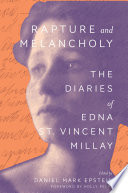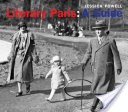Literary Paris: A Guide | Jessica Powell
For centuries Paris was the destination of writers from the provinces and from across the ocean, and the city swiftly became an integral part of the lives and work of those who went there. Literary Paris profiles thirty writers and the apartments, cafes, bistros, theaters, museums, and other places central to their daily lives and featured in their work. Literary Paris opens with Moliere, whose farces lampooning man�s vanity and hypocrisy delighted the royal courts. In the next century, we glimpse the destitute Zola, so hungry that he ate sparrows caught on his windowsill, and the perpetually bankrupt Balzac who, hoping to evade creditors, required friends to give a secret phrase��Apple season has arrived� or �I come with lace from Belgium��to gain admittance into his quarters. Among the twentieth-century writers profiled are Georges Simenon, creator of wildly popular detective novels, who in Paris began an affair with the sensational Josephine Baker; F. Scott Fitzgerald, who, instead of finding the �new rhythm� he sought, burned through his money and talent in the City of Light; as well as Henry Miller, George Orwell, James Baldwin. Women writers include the scandalous Colette; George Sand, friend of Lizst and lover of Chopin; and the sophisticated New Yorker correspondent Janet Flanner. Great city landmarks are here, including Notre Dame Cathedral, where Quasimodo imprisoned Esmerelda in Victor Hugo�s masterpiece, and the Louvre, where in 1911 the Mona Lisa vanished in a scandal that ruined the poet Guillame Apollinaire. Also featured are the beloved cafes integral to the city�s culture, such as Caf� Flore, where Simone de Beauvoir claimed a spot by the stove each morning to write while her lover, Jean-Paul Sartre, was off at war.























